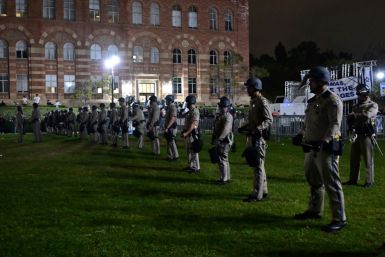Explore Mars on Earth: Canadian island has Mars-like features for would-be Mars explorers

A remote, isolated island in the Canadian Arctic would potentially be the official training site for astronauts bound for Mars in the future, offering the nearly-similar geologic features with the Red Planet. The lack of infrastructure and its extreme temperatures resembling to Mars could allow experts to explore Martian environment.
Devon Island, the largest uninhabited island on the planet, is currently used for the Haughton-Mars Project (HMP), an international, multidisciplinary field-research venture, aiming to support manned missions to Mars. HMP, which started in 1997, is considered the longest NASA-funded research project on Earth.
Devon Island offers many challenges like Mars, according to Pascal Lee, HMP mission director and principal investigator of the Mars Institute.
"The climate is cold — not quite as cold as Mars, but in the right direction,” he told Space.com. "The climate is dry — not quite as dry as Mars, but it's in the right direction. And the terrain is unvegetated, not completely, but mostly. Not to mention the rocky, frozen ground and glaciers."
Devon Island also features the Haughton Crater, about 23 million years old and 12 miles in diameter. Lee described the impact that created the crater as "so violent that it dug all the way down to a mile into the rocks of Devon Island."
The impact caused the compact rocks of the island to be colonised by microbes. The crater in the polar desert of Devon Island is surrounded by valley networks, canyons, gullies and ancient lake beds, which are all considered to have counterparts on Mars.
However, "that's not to say that they were necessarily the same things that we were seeing on Mars,” Lee noted. “But there was a convergence of all these geologic features in one location."
In fact, Lee believes that Devon Island might provide important clues about early Mars. The HMP director explains that he's skeptical of the idea that the young Mars once had a warm and wet climate, which he proposed that despite its warm ground, early Mars had a cold climate.
With impacts, dumping heat into the ground, and more active volcanism on the young Mars, Lee said that water vapour could have been brought into its frigid atmosphere. There were also transient ice covers on the Red Planet and as the ground was warm, not the climate, Lee said the ice covers could have melted from underneath, creating valley networks.
The Mars-like features of Devon Island make the site suitable to plan a crewed trip to the Red Planet, Lee said. More of its Mars-like attributes, like ground ice, patterned ground, debris flows, cold-desert weathering crusts and paleo-lake deposits, offer more benefits for would-be Mars explorers.
"It's an infrastructure that is dedicated to advancing the exploration of Mars by robotic and human means," he said. Many astronauts had already been in the site, and Lee said they are expecting more will come as part of the actual training.
The HMP teams have already used Devon Island to test robotic rovers, spacesuits, drills and aerial drones, Space.com reported. Currently, gears, such as the Mars-1and OkarianHumvee rovers and personal all-terrain vehicles (ATVs), are at the site for short treks.
Lee and a small group of scientists from across the world are currently working for the 20th HMP field campaign in mid-2016.
"The way I envision it, Devon Island will eventually become a training site for astronauts bound for Mars," he said. "It will become one of the imperative stops, if not the final stop, in your preparation for the Red Planet."
Contact the writer at feedback@ibtimes.com.au or tell us what you think below.






